




Usually when I'm swatching in the round I get seriously irritated with the loose, loopy, flappy stitches at either edge of my swatch. Those long tails around the back of the swatch loosen up the edge stitches and I'm constantly trying to tug them back into place.
I had a crazy idea that I could try twisting the edge stitches to tighten them up, so I thought I'd give it a try on this swatch. It worked! Just knitting the first and last stitches through the back loop has made a neat edge with tight little stitches that are not working loose.

Just after knitting those stitches I make sure to give the tail a little extra tug to get it to sit nicely. After that, they just stay put!
I love the way this looks too. Next time I'm knitting a cardigan with a garter-stitch button band I think I'll do this with the edges. It's just so tidy!
Now I have no idea if this will work with all types of yarn. This is cotton, maybe it is just grippy enough to make this work. If you try it with another yarn I would love to hear about it! Tag @kniterator on Instagram or Facebook to show us your swatch!
Happy knitting!
- Tineke
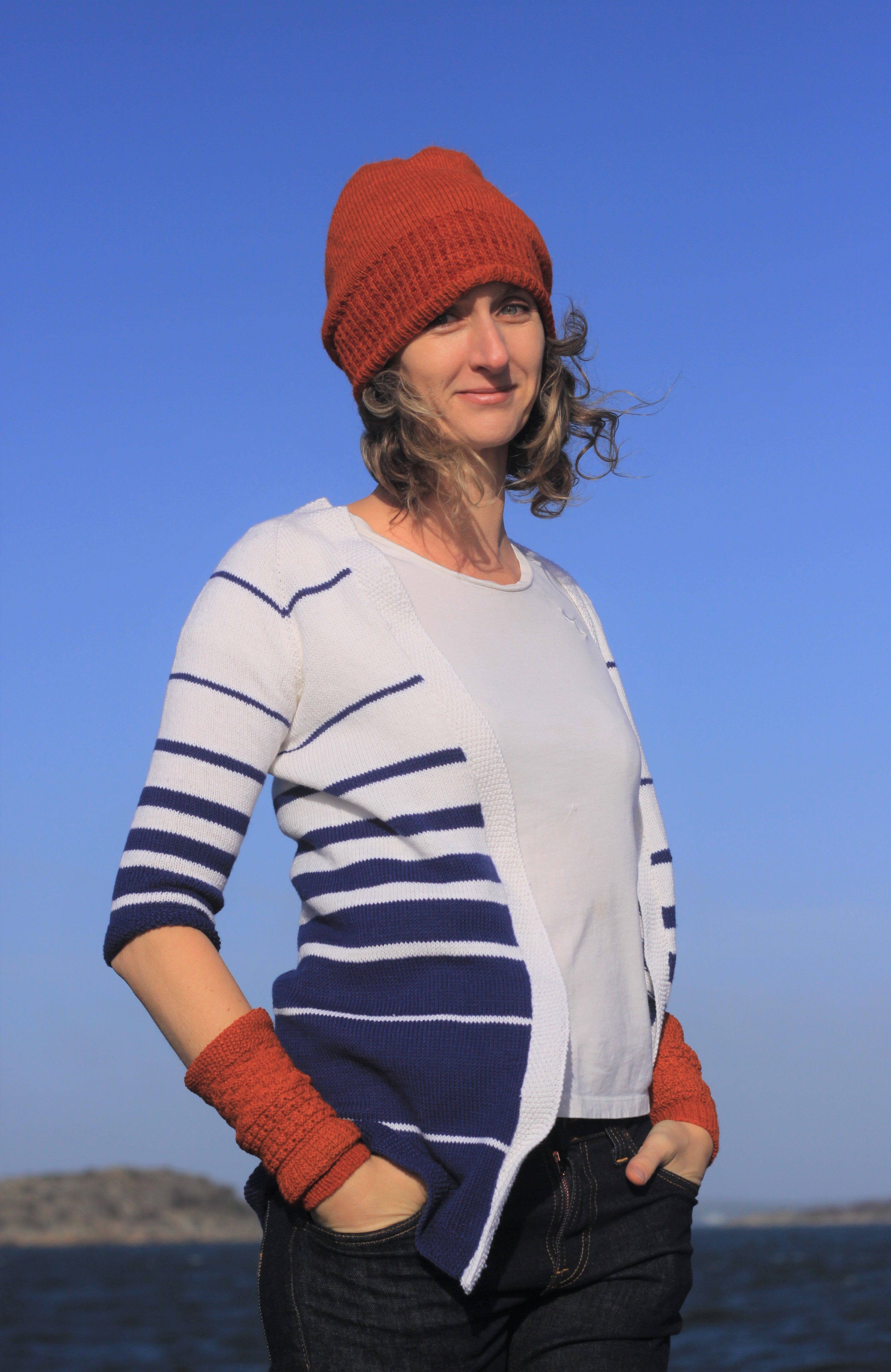 It's just a few more days until we release our first ever Kniterator Design! The Ripple cardigan will be available here, all you need to do is provide your measurements and gauge and the pattern will be calculated for you in your size, with all the instructions for the fading stripes!
It's just a few more days until we release our first ever Kniterator Design! The Ripple cardigan will be available here, all you need to do is provide your measurements and gauge and the pattern will be calculated for you in your size, with all the instructions for the fading stripes!
If you want to get knitting right away you might as well be ready - so what do you need?
We 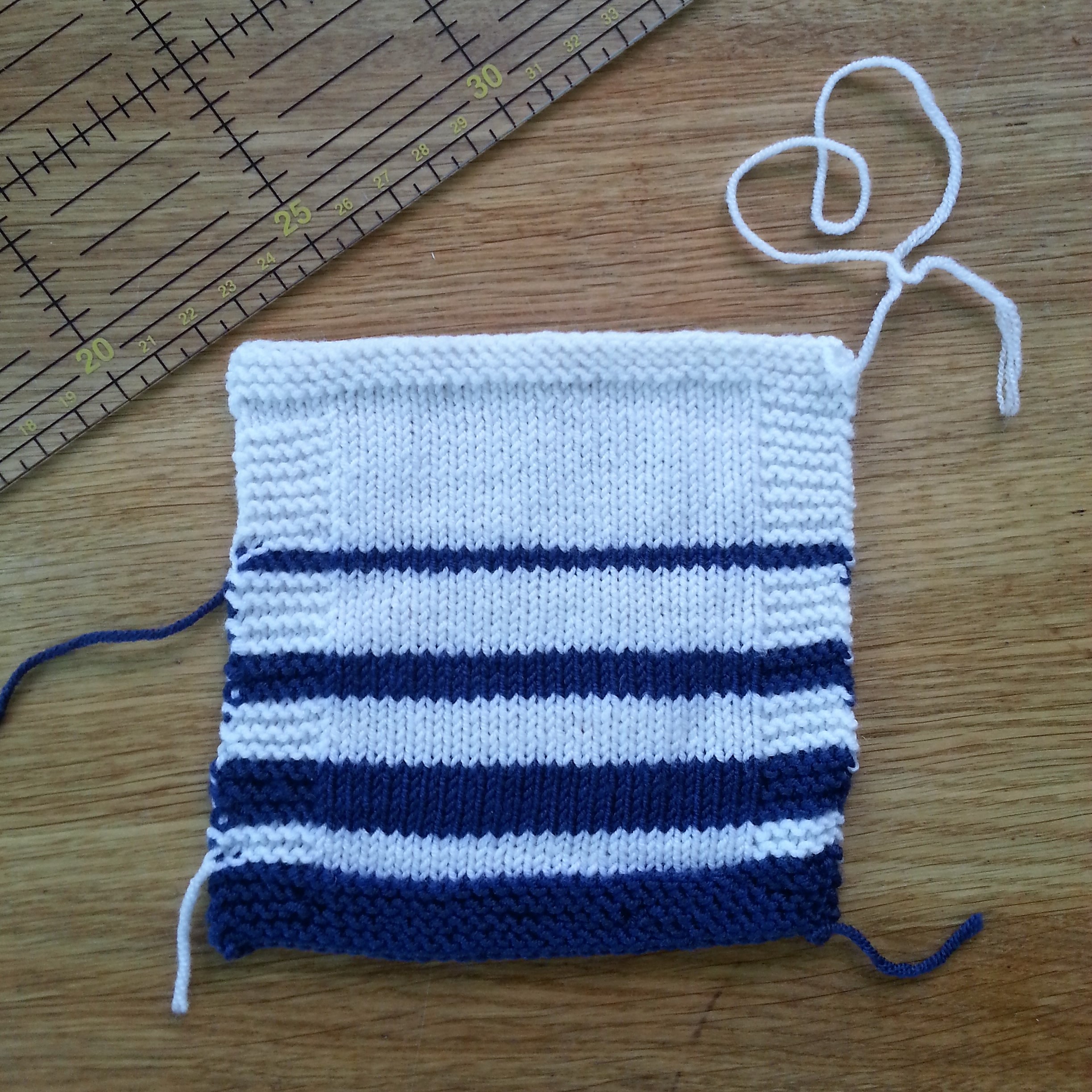 always recommend knitting a swatch. You should knit your swatch back and forth, because the cardigan is worked flat. You might also want to do a second swatch in the round, because your sleeves will be knit in the round. If the gauge is much different between the two swatches, try repeating the round swatch with slightly smaller needles, until you get them to match. Then make a note about what the needle size was, and switch to that size when you begin the sleeves, for a perfect fit!
always recommend knitting a swatch. You should knit your swatch back and forth, because the cardigan is worked flat. You might also want to do a second swatch in the round, because your sleeves will be knit in the round. If the gauge is much different between the two swatches, try repeating the round swatch with slightly smaller needles, until you get them to match. Then make a note about what the needle size was, and switch to that size when you begin the sleeves, for a perfect fit!
When you order your pattern you'll need to enter both your stitch gauge and row gauge. You can specify stitches per one inch, or per 4 inches, or per 10cm, or over whatever you have distance measured.
You will need measurements for your chest, ease, sleeve length and cuff.
For the chest, just take a measurement around the fullest part of the chest.
Your ease measurement will depend on how loose you would like your sweater. My sample was made with zero ease, so in other words it was made to exactly fit my chest measurement, and it's very snug across the back and in the sleeves. One or two inches (2.5 - 5cm) is a fairly normal ease range for a casual fitting sweater. If you're not sure, try holding your measuring tape together at the point one inch bigger than your chest measurement, and see how it feels. How does 2 feel? How does zero feel?
Remember: as you'll be knitting from the top down, you will be able to try the sweater on and you can always decide at the last minute to do more or fewer raglan increases to make it bigger or smaller. That's the magic of knitting top down!
For the sleeve length, measure down the underside of your arm from the armpit to the point where you'd like the sleeve to end. Try measuring with the arm slightly bent, so that the sleeve doesn't ride up too far.
For the cuff, measure around your arm at the point where you want the sleeve to end. E.g. if you want elbow-length sleeves, measure around your elbow. If you're doing to knit full-length sleeves, measure around your wrist. You need to add a little bit of ease to this measurement - just hold your measuring tape a little loosely around your arm/wrist, about as tight as you'd like the sleeve end to sit.
Estimating yardage for the pattern is very difficult because it depends heavily on your gauge and your size. Loveknitting.com have a table of yardage guidelines for different types of garments & gauges. You can take the yardage for an adult sweater from that table as a very rough guideline. You can also try one of the many yardage calculators out on the net.
If you'd like some yardage guidance for your particular yarn, get in touch by emailing support@kniterator.com and we'll do our very best to help you out!
- Tineke
I wasn't going to write a blog post today. I wasn't going to mess about with yarn, either. I was going to fix bugs. But then this thing happened, a thing that happens to me every now and again ... I got given a big old massive bag full of YARN. Every so often, someone in the periphery of my social circle decides to gift me all or most of their stash. And I LOVE IT WHEN THAT HAPPENS. It's like Christmas!
So I've been sorting and weighing and squeezing and sniffing and I thought I might as well share it with everyone.
I'll start with what I thought was most exciting (because there's a risk that many readers won't bother to consume this whole post). 600 grams of this luscious blue linen yarn.
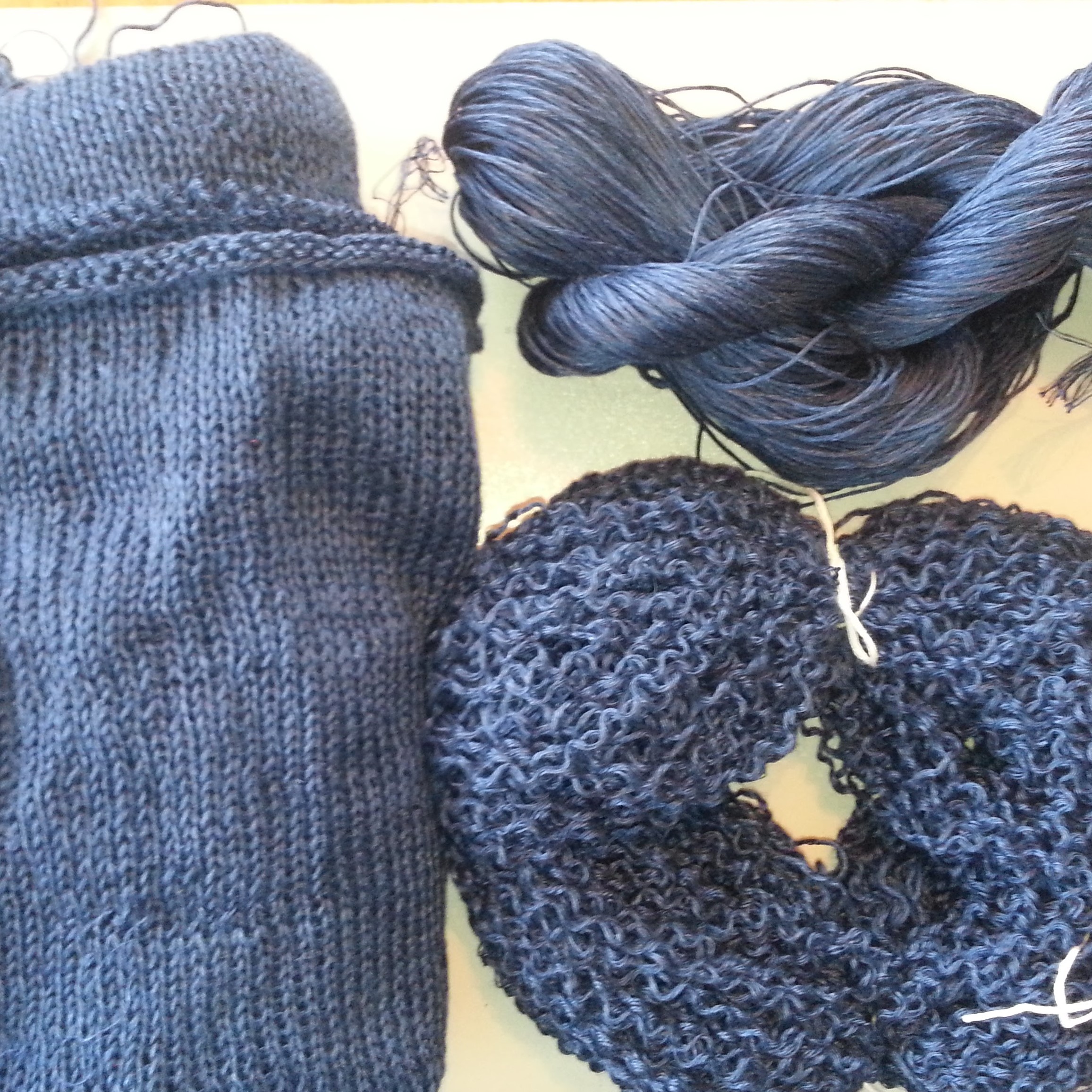
Most of those 600g are already in the form of a partially complete sweater. I have frogged one piece, that was already unravelling, and you can see its curly froggyness at the bottom right. I think I'll hang all the frogged yarn up in the shower to see if it will straighten out the kinks.
My generous benefactor seems to like linen - there was a further 70g ball in gunmetal grey and 40g in pale grey. But she also seems to like FLUFF, because get a load of this: just under 300g of assorted mohair/angora yarns:
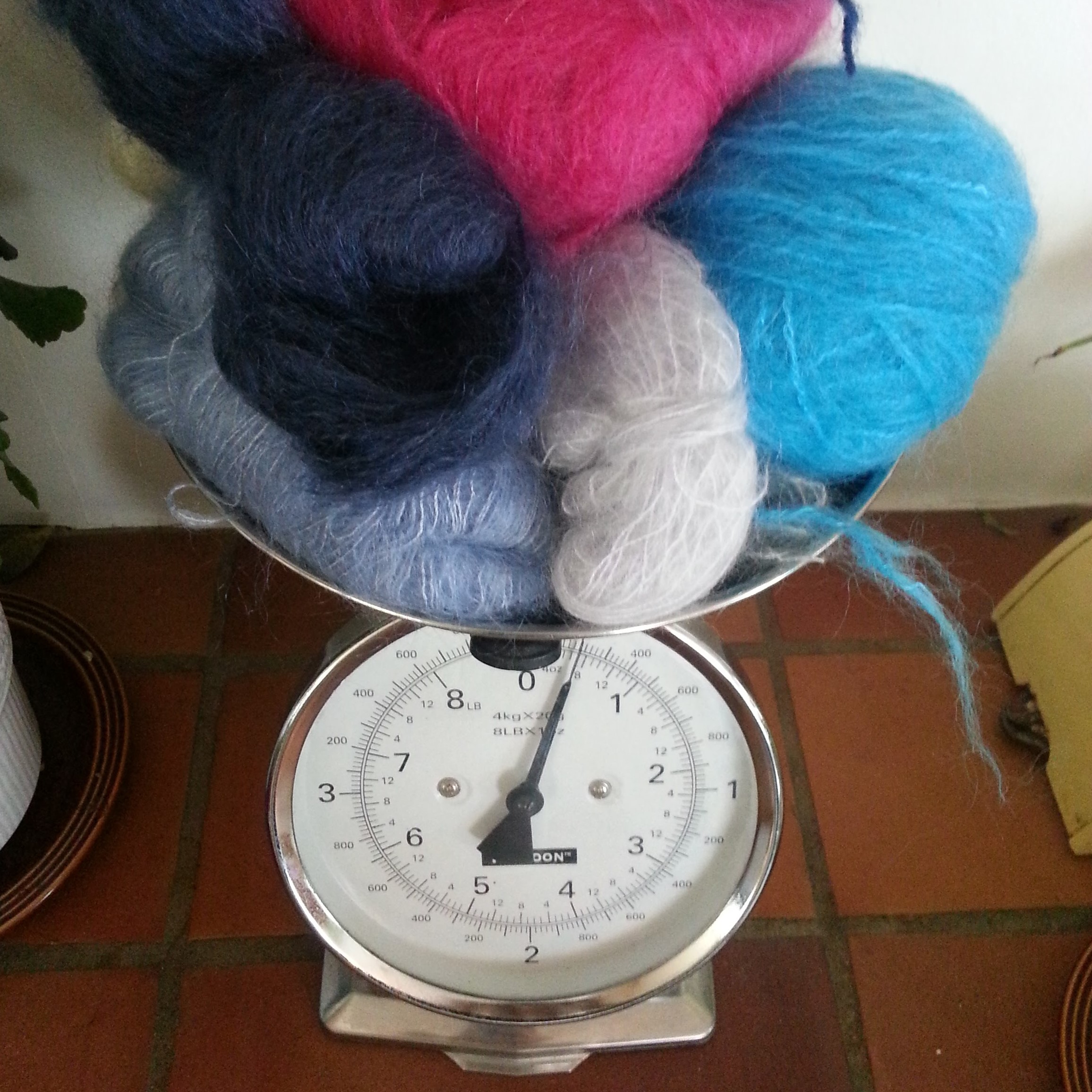
Most of them are in blues and greys so I think they'll work nicely together for ... something 😉
There was 4 balls of completely untouched Drops Safran, 3 in a nice off-white and one dark blue. And I just love white & blue! And 100g of this black laceweight something - feels like wool, I will do a burn test on it later to confirm. If I don't knit with this then it will work well for weaving, along with some other yarns I have in similar weights.

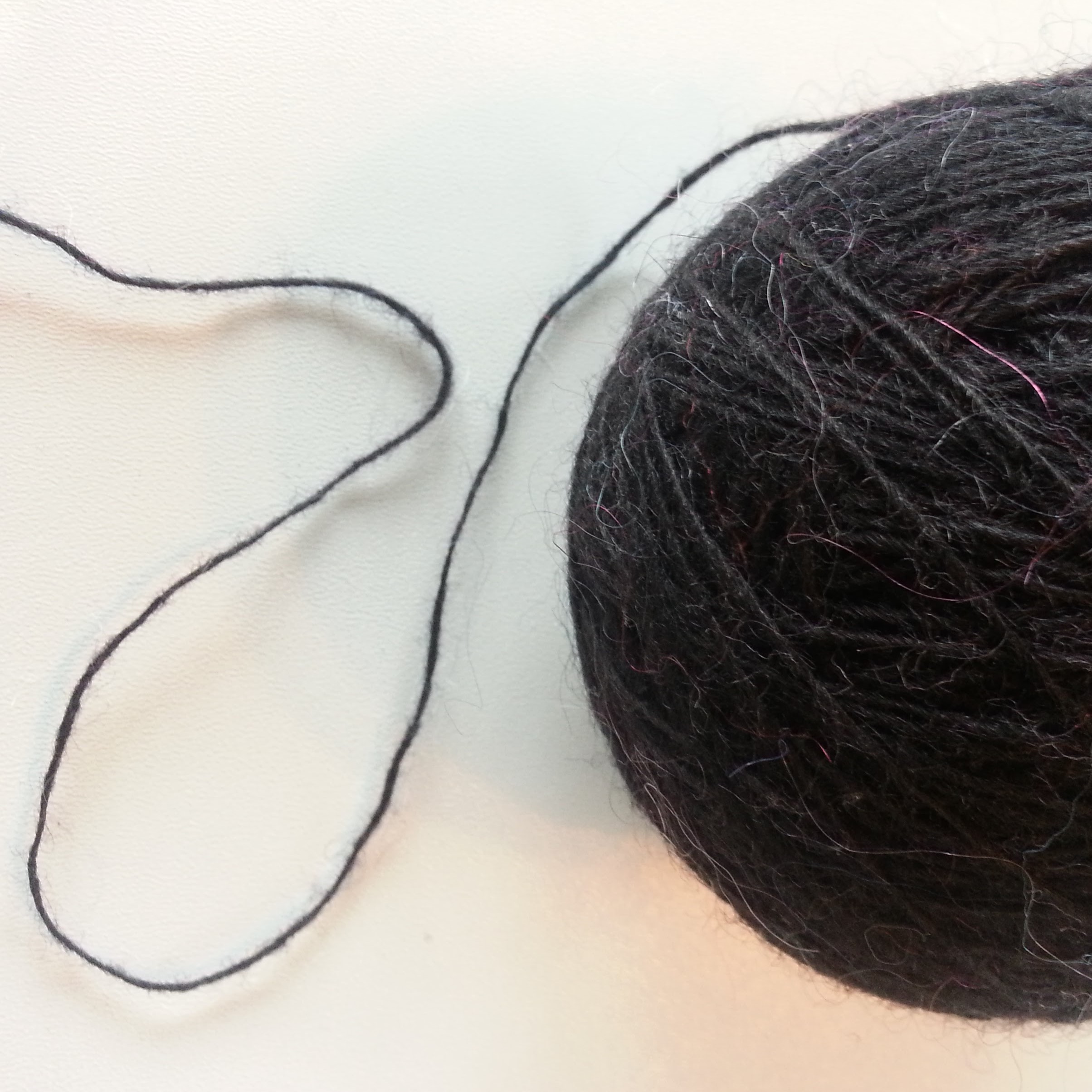
Oh wait, more linen! 100g of it, black, in the form of a partially-frogged shawl. I can't decide if I want to finish frogging it and re-use the yarn, or fix up the unravelling edge and keep it as a shawl. I kindof like it!

Just look at this bowl of sock scraps. This is my kind of candy bowl! 😍 240g of assorted leftovers and there was an untouched 50g ball of Regia sock yarn too. I can see some crazy scrappy socks in my future!

200g (combined) of one lovely squishy thick-n-thin yarn and one mohair. My daughter gravitated towards this but it feels a lot like something that ought to be hand-washed, so I'm not convinced it's approved for 8 year olds. We'll see what becomes of it. This is also partially worked up into a triangle shawl.
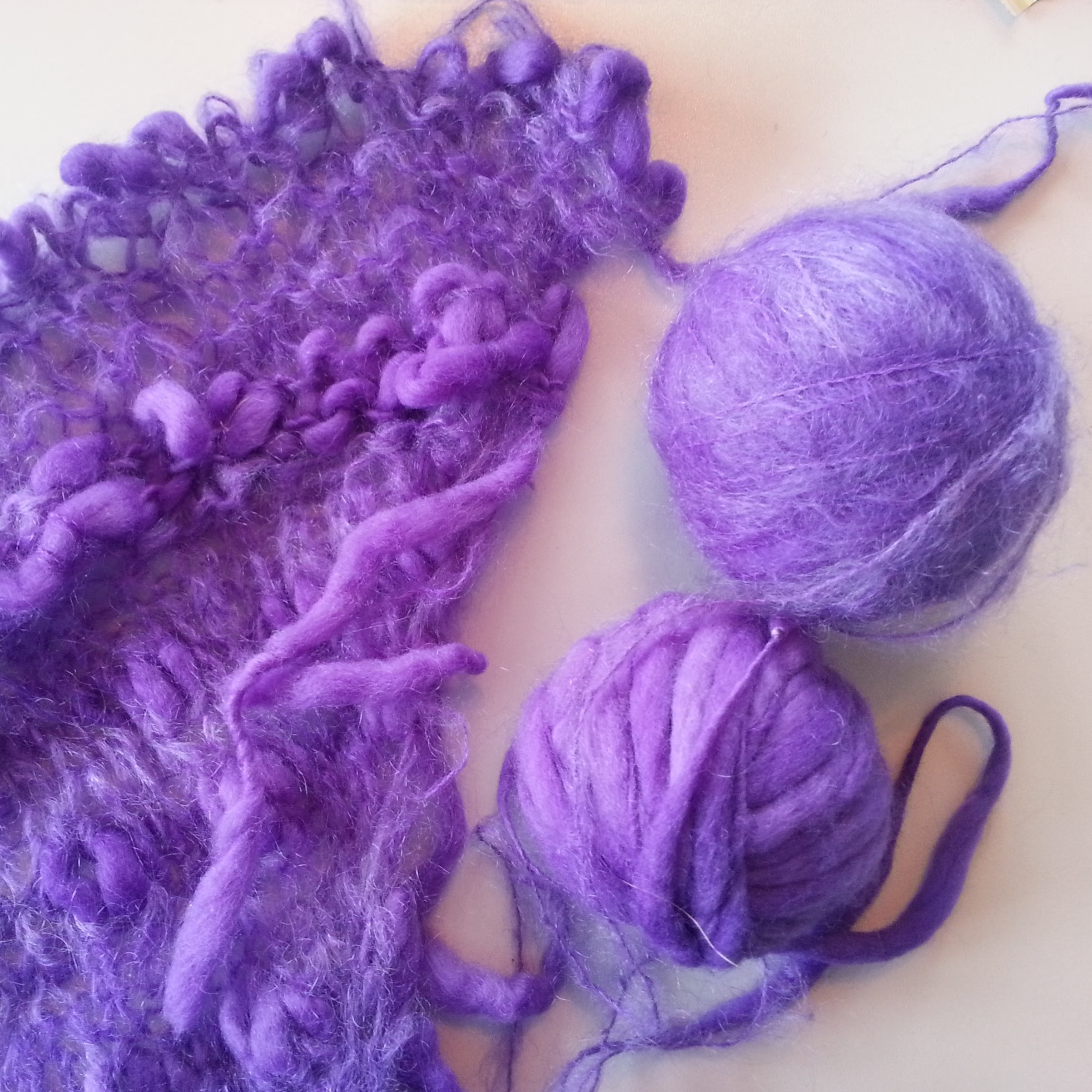
There is 400g of assorted bits and pieces, complete and almost-complete skeins in a few nice neutral colours and weights. Always good for hats/mittens/socks/armwarmers/legwarmers/whathaveyou.
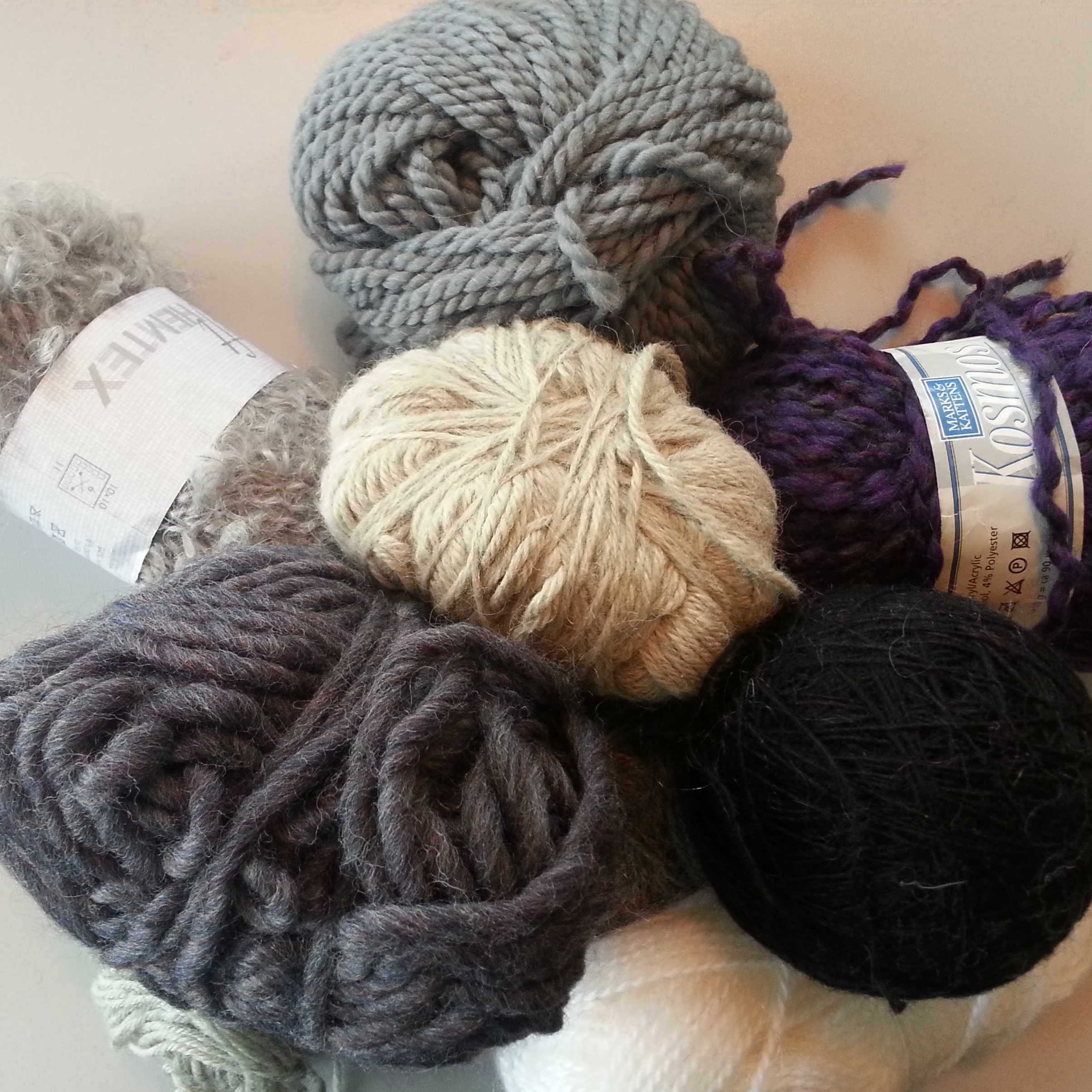
And finally I just had to post a picture of these teeny scraps. Because this is the kind of knitter who will not throw away even the tiniest of scraps ... and I am that kind of knitter too. So I loved finding these tiny bits, it says to me that this yarn was valued and appreciated. And now I am the one who has the honour of valuing and appreciating it further!
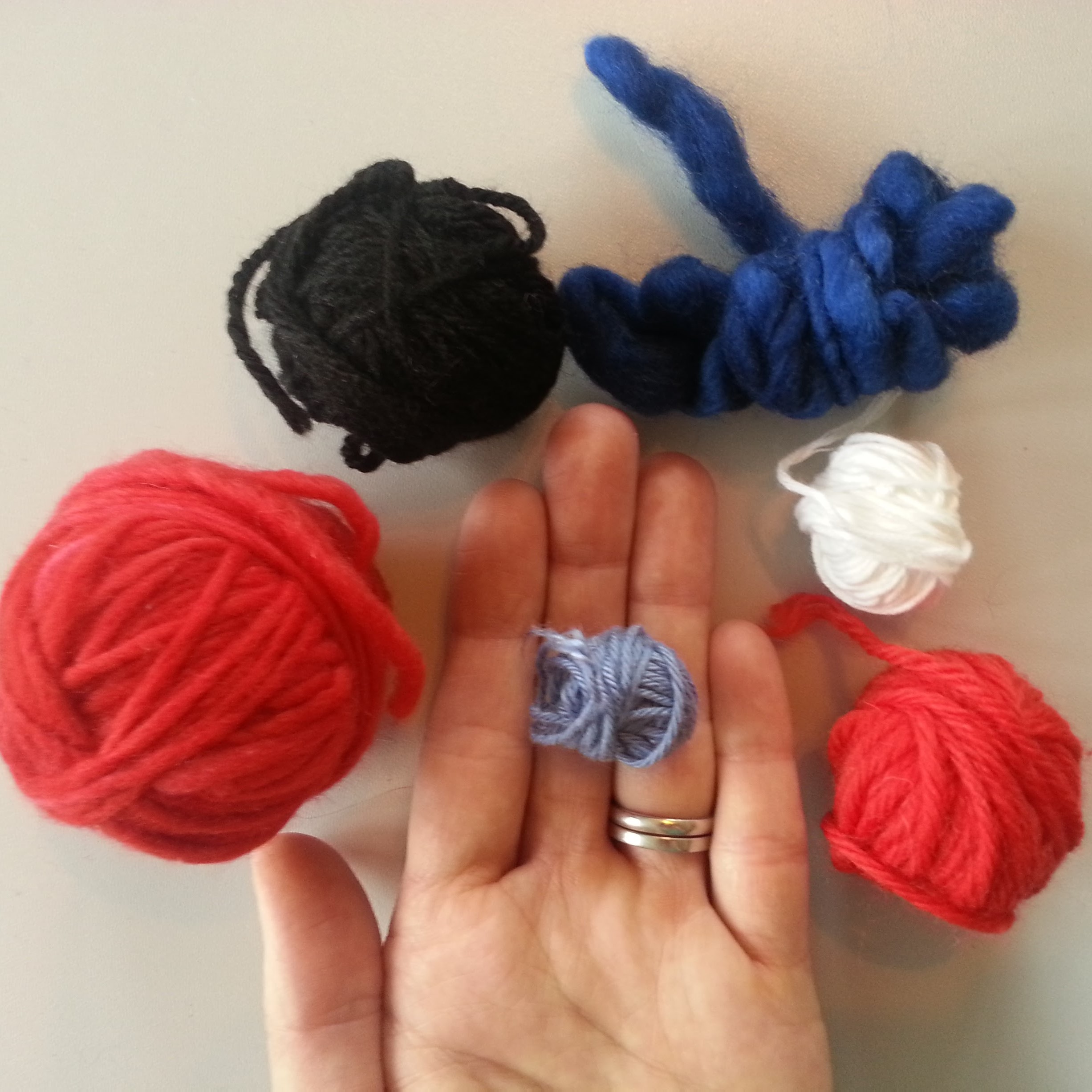
Altogether, that was 2.59 kilos of pure stash enhancement in one Clash Ohlsson carrier bag of delight 😃
Gunnel: TUSEN TACK! Vilken rolig fredagmorgon jag fick!
Aaaaaand now I should probably fix those bugs. Happy knitting and happy weekend everybody!
- Tineke
If you follow us on Instagram or Facebook, or are in the Ravelry group, you might have heard me banging on about this cardigan:
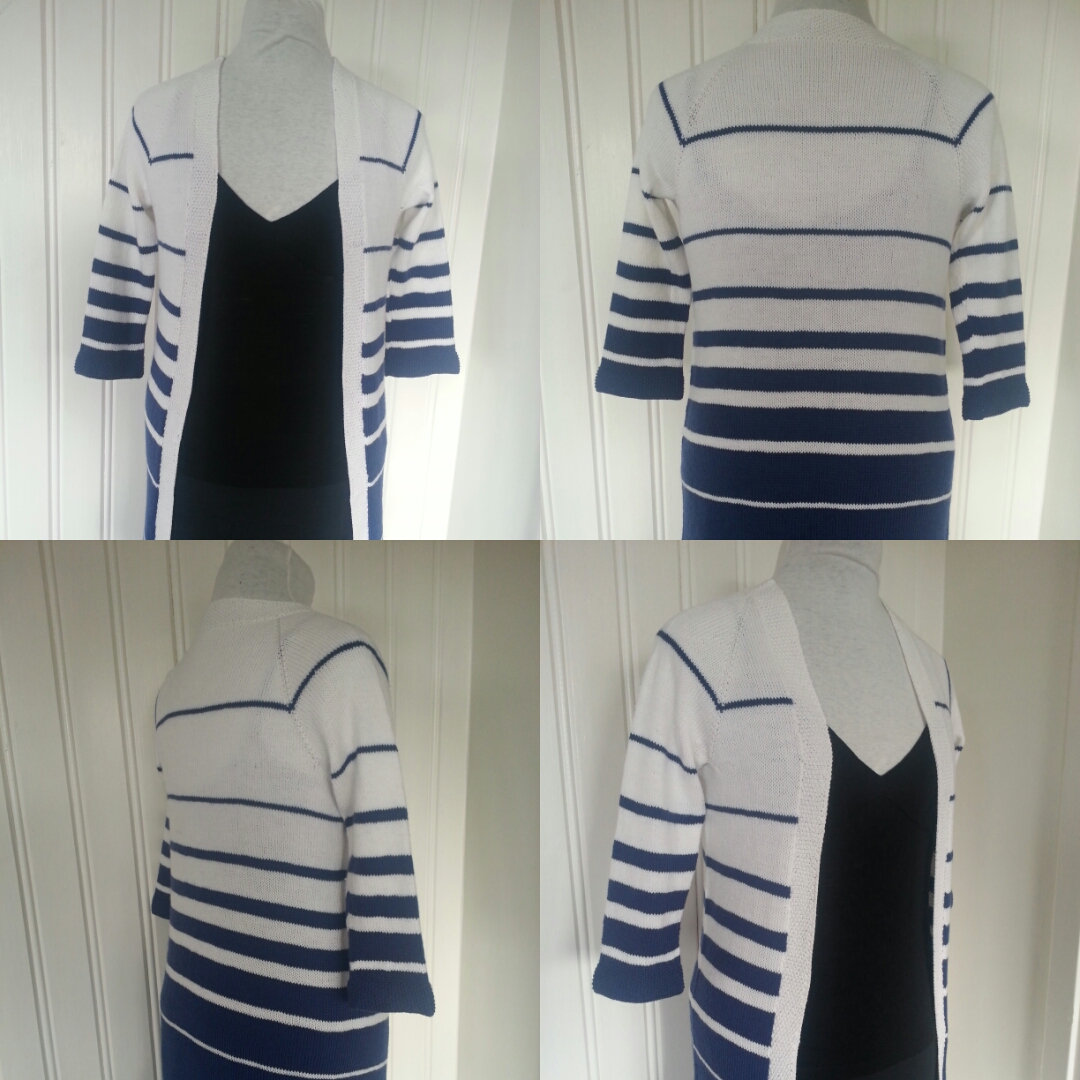 This is the Ripple Cardigan. Right now it's being test knit and I'm ironing out the bugs, and soon it will be available as a shortcut design here on Kniterator.com.
This is the Ripple Cardigan. Right now it's being test knit and I'm ironing out the bugs, and soon it will be available as a shortcut design here on Kniterator.com.
That means that you'll be able to input just your chest measurement, desired sleeve length, cuff size, and your gauge information, and it will generate a longline open cardigan pattern for you with this graduated stripe sequence.
And of course, as with any Kniterator pattern, you can generate this for any size in any gauge.
Kindof cool, huh? Well ... I think so anyway. I hope to release many more patterns like this in the future. It gives you all the pattern-scaling power of Kniterator, but within the scope of a particular design, taking the guesswork out of designing your own garment.
If you think you're going to want to knit Ripple, then hit the link above to register for a free account. Then you'll be on our mailing list and will get an exclusive discount code when it's launched!
Happy knitting everyone!
- Tineke
PS: if you're a visionary knitter and you could see yourself knitting this for a man, then please get in touch because I'm still looking for a test knitter to whip up a manly Ripple too!
Hi there!
You won't often see pictures of me on the blog or on our social media feeds - I'm one of those people who just doesn't like being photographed. But I'm making an exception today because I thought I'd introduce the "human face" of Kniterator.
When we started out I kindof felt like I wanted Kniterator to look really professional, like we are a "real company". But what is a real company anyway? Technically, we are a company, so that's good enough for me, and we can just be ourselves, right?
We are are just two people - me (Tineke) and my husband (Linus). However, Linus often works at other jobs so most of the time it's actually just me. I also do some part-time consulting work for my old firm - which is so much less fun than working on this, but it does keep the wolves from the door until the day comes (I hope) when Kniterator actually brings in enough to cover its costs.
So who am I? I'm three-quarters Dutch and one quarter English, born and raised in New Zealand, lived in the UK a while (and am a British citizen), and for the last 8 years I've lived here in Sweden. I've been a software engineer for 19 years now, my degree is in computer science & mathematics. I'm a classic introvert and I'm totally okay with it. In my spare time I knit (obviously), sew, weave, embroider, and potter in my garden. Linus & I have two daughters, they are 5 and 7 years old, and yes I am trying to get them knitting too!
I have huge hopes for Kniterator, but since it's mostly just me doing the development I hope you will all be patient while I work my way through my never-ending wishlist. My ultimate vision for Kniterator is that it lets you design your own sweater pattern that is custom sized to exactly your shape. If I get my way, the design features will eventually include...
And the fit customisation features will eventually include:
And I hope that our customers will come up with even more ideas for us in the future too!
I am also dreaming of collaborating with some established designers, getting them to come up with "special edition" designs available on Kniterator, that you just customise to your own shape. I have a mental wishlist of designers to approach, I just need to summon the courage to do so.
So that's an introduction to me, and my Kniterator hopes and dreams. I hope you'll enjoy all the things to come. Thanks for reading!
- Tineke
Well it took a while to get it right, but we're super excited today to announce that you can now add fixed size colourwork charts to your Kniterator patterns!
When you enable the chart addition, you can select one chart for your sweater body and one for the sleeve. We're starting with a small selection of just three charts:
 1. Snowflakes
1. Snowflakes
This old chestnut! You've probably seen me knitting away on these if you follow us on Instagram or Facebook. I came up with this simple chart when my daughter requested purple snowflakes on a pullover I was knitting for her. There are two variations: one 21 stitches wide (good for sleeves) and one 57 stitches wide (good for the body of a sweater). Unless you're using very bulky yarn, the snowflake is best suited to a child's pullover (otherwise it will look tiny in the center of your sweater).
 2. Goose Eye
2. Goose EyeDid you know that I'm also a weaver? I just love the goose-eye twill pattern, something that comes up often in both traditional and modern weaving patterns here in Sweden. So I whipped up this band of goose-eye twill pattern for you to knit. This chart is 103 stitches wide, so it fits nicely across the chest of an adult-size sweater (but would not fit on a sleeve).
 3. Swirls
3. SwirlsAnd did you know that I'm from New Zealand? This swirly pattern is loosely inspired by Maori koru designs (a stylised fern frond). This chart is 93 stitches wide, so also fits well on an adult-size sweater.
Charts are currently not selectable if you've got a custom neck size, because it's complicated figuring out where to put the start point (but this is almost fixed, so I hope to remove that limitation really soon)
Also, for the time being these charts are only applicable to pullovers, because I have some work to do to nicely split a chart in two in order to center it properly on the front of a cardigan.
As well as fixes for the above 2 limitations, I wanted to let you all know that this is only the beginning! This release lays the groundwork for a much more comprehensive ability to add charts to your patterns. And not just colourwork, but charted lace panels and charted cables too!
Ultimately you will be able to select a chart and specify to either put it in just one place, or have it repeat all the way around the sweater automatically. If the number of stitches around the sweater body isn't a round number of pattern repeats, Kniterator will inform you and give you the option of adding or removing a few stitches, to make it fit.
I'm also going to look into how to enable you to upload your own chart designs to Kniterator.
Stay tuned, and happy knitting!
- Tineke
We've been talking for ages about needing a blog on the site, and finally, it's here!
Be sure to stop by now and again and catch up on the latest news, as well as tips and tricks to help you get the most out of Kniterator.
We'd also love to feature you're finished knits, so drop us an email to support@kniterator.com or contact us via the Ravelry group
Happy knitting!
- Tineke